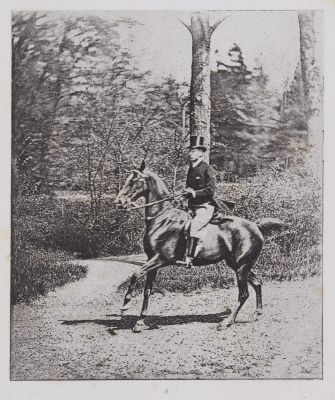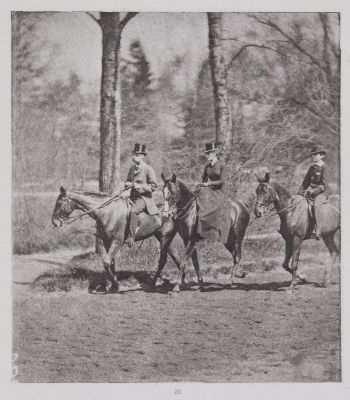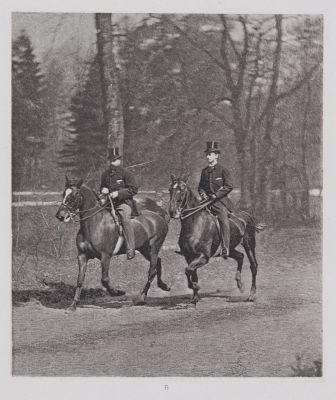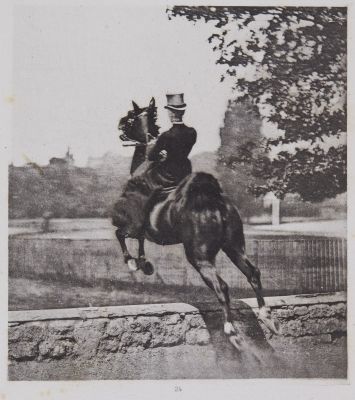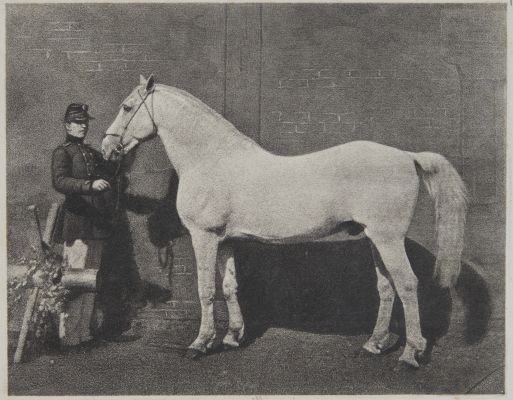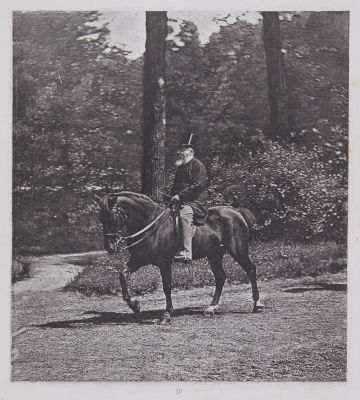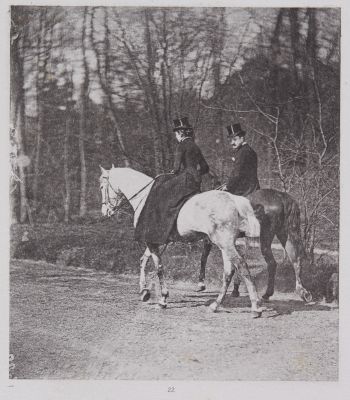
Title
Fitz GladiatorArtist
Delton, Louis Jean (French, 1807-1891)Date
1867Process
Photogravure (heliogravure)Atelier
DrivetImage Size
15.1 x 18.3 cm
Drivet is not one of the early photogravure practitioners usually discussed. Waterhouse mentioned him in his essays in the Photographic News and displayed one of his prints at the Victoria and Albert. Samuel Wagstaff had a Drivet print in his photomechanical exhibit at the Grolier Club, and André Jammes exhibited a Drivet at his Intaglio exhibit in Switzerland. The process of Drivet for engraving plates is not described, but the principle of it can be gathered from the specification of the patent. At the same that the image of the object is exposed on a prepared collodion plate in the camera, the image of a sheet of white paper, covered with closely ruled black lines, is exposed upon the same plate, and at the same time, through another opening from an exactly opposite direction. A negative is thus obtained which would print a positive picture having the required lines in the highlights obliterated, and intensely developed in the deep shadows. A gelatin picture printed as in woodbury’s process, gives the matrix from which an electrotype plate is produced, to be printed from as an engraved copper plate. [1]
As a member of the aristocratic Jockey Club established in 1833, Louis-Jean Delton was primarily interested in photographing horses. In 1861, he set himself up as an equestrian photographer in Paris under the name Delton J. & Cie (Company). Although he photographed a range of individuals, from clowns to European royalty, his accomplished images of animals were the works that gained him renown. Around 1886 Delton dropped the "& Cie" from his trade name and began to produce albums of animal photographs. From 1889 until 1894, he published a newspaper in which he reproduced many of his own horse-racing images. After moving to Nice in 1896, Delton made photographic studies of stopped motion for a book advertising artificial light. [2]
References
[1] Hanson, David A. Checklist of Photomechanical Processes and Printing, 1825-1910. , 2017. p. 43.
[2] Getty Museum web site www.getty.edu/art/collection/person/103KEP cited 02/23/23
HCL 43 1867 report of the Paris commission, Waterhouse
